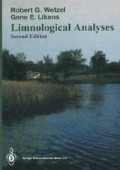Abstract
Human activity has affected profoundly streams and lakes in all parts of the world. Streams have been subjected to additions of gross amounts of domestic sewage, industrial effluents (e.g., wastes from tanneries, pulp mills, creameries, steel mills, and chemical factories), agricultural wastes, oil spills, mining wastes, urban runoff, radioactive materials, pesticides, waste heat, and numerous other pollutants, often because it was considered expedient and economical to have the unwanted materials carried away (“out of sight”) by the flowing water. Likewise, under the guise of “progress,” streams have been channelized, stabilized, dewatered (for irrigation), and super-watered (artificially increased flow for drinking and power plant needs). In most cases, the effects on the aquatic biota are insidiously cumulative. In some cases, the effects are readily apparent [e.g., acid mine drainage; see Parsons (1968)], but in others the effects accumulate more slowly [e.g., accumulations of trace metals; see Whitton and Say (1975)]. In all cases, a longitudinal gradient develops below the point of insult and, given enough time (distance) without further insult, the stream ecosystem generally recovers to a state of well-being.
Access this chapter
Tax calculation will be finalised at checkout
Purchases are for personal use only
Preview
Unable to display preview. Download preview PDF.
References
American Public Health Association. 1989. Standard Methods for the Examination of Water and Wastewater. 17th Ed. Amer. Public Health Assoc., Inc., New York. 1550 pp.
Bertucci, J.J., C. Lue-Hing, D. Zenz, and S.J. Sedita. 1977. Inactivation of viruses during anaerobic sludge digestion. J. Water Poll. Control. Fed. 49: 1642–1651.
Bolton, R.L. and L. Klein. 1971. Sewage Treatment-Basic Principles and Trends. Ann Arbor Publ. Michigan. 256 pp.
Borchardt, J.A., J.K. Cleland, W.J. Redman, and G. Oliver (eds). 1977. Viruses and Trace Contaminants in Water and Wastewater. Ann Arbor Sci. Publ., Michigan. 249 pp. Hammer, D.A. (ed). 1989.
Constructed Wetlands for Wastewater Treatment. Municipal, Industrial and Agricultural. Lewis Publ., Chelsea, MI. 831 pp.
Hanes, N.B., G.A. Delaney, and C.J. O’Leary. 1965. Relationship between Escherichia coli, Type I, coliform and enterococci in water. J. Boston Soc. Civil Engrs. 52:129–140.
Hynes, H.B.N. 1963. The Biology of Polluted Waters. Liverpool Univ. Press. 202 pp. Likens, G.E. (ed). 1972. Nutrients and Eutrophication. Special Symposia, Vol. I., Amer. Soc. Limnol. Oceanogr., Allen Press, Lawrence, KS. 328 pp.
Parsons, J.D. 1968. The effects of acid strip-mine effluents on the ecology of a stream. Arch. Hydrobiol. 65:25–50.
Rodina, A.G. 1972. Methods in Aquatic Microbiology. Translated and revised by R.R. Colwell and M.S. Zambruski. Univ. Park Press, Baltimore. 461 pp.
Rohlich, G.A. and P.D. Uttormark. 1972. Wastewater treatment and eutrophication. pp. 231245. In: G.E. Likens, Editor. Nutrients and Eutrophication. Special Symposia, Vol. I. Amer. Soc. Limnol. Oceanogr. Allen Press, Lawrence, KS.
Whitton, B.A. and P.J. Say. 1975. Heavy metals. pp. 286–311. In: B.A. Whitton, Editor. River Ecology. Univ. of California Press, Berkeley.
Author information
Authors and Affiliations
Rights and permissions
Copyright information
© 1991 Springer Science+Business Media New York
About this chapter
Cite this chapter
Wetzel, R.G., Likens, G.E. (1991). Effect of Sewage Outfall on a Stream Ecosystem. In: Limnological Analyses. Springer, New York, NY. https://doi.org/10.1007/978-1-4757-4098-1_28
Download citation
DOI: https://doi.org/10.1007/978-1-4757-4098-1_28
Publisher Name: Springer, New York, NY
Print ISBN: 978-1-4757-4100-1
Online ISBN: 978-1-4757-4098-1
eBook Packages: Springer Book Archive

